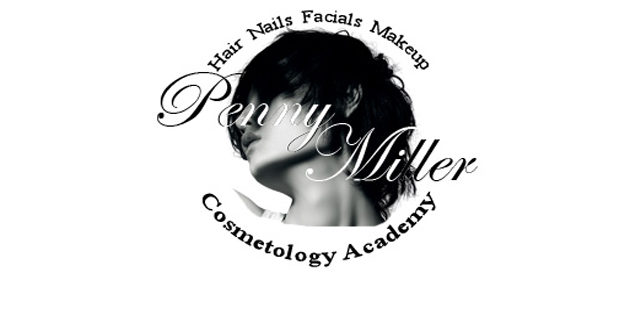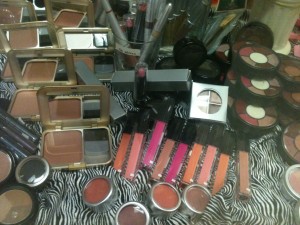Vidal Sassoon, Hairdresser and Trendsetter, Dies at 84

May 9, 2012.
Vidal Sassoon, whose mother had a premonition that he would become a hairdresser and steered him to an apprenticeship in a London shop when he was 14, setting him on the path that led to his changing the way women wore and cared for their hair, died on Wednesday at his home in Los Angeles.
A spokesman for the Los Angeles police, who were called to the home, on Mulholland Drive, confirmed the death, attributing it to natural causes. Mr. Sassoon was known to have leukemia.
Mr. Sassoon brought a kind of architectural design to the haircut in the late 1950s and early 1960s, developing a look that eschewed the tradition of stiff, sprayed styles with the hair piled high and that dispensed with the need for women to wear hair curlers to bed and make weekly trips to the salon.
For Mr. Sassoon, the cut was the thing — just about the only thing — and he fashioned his clients’ hair into geometric shapes and sharp angles to complement their facial bone structure. His short, often striking styles helped define a new kind of sexy. They were also easy to care for and maintain — the wash-and-wear look, it was sometimes called — and they helped propel the youthful revolution in fashion (and just about everything else) that gripped London and then America and the rest of the world in the 1960s.
One of his early clients was the mod fashion designer Mary Quant, who created the miniskirt. Referring to it in a 2010 documentary film about him, she said to him, “You put the top on it.”
“He changed the way everyone looked at hair,” Grace Coddington, the creative director of American Vogue, said in an interview on Wednesday. “Before Sassoon, it was all back-combing and lacquer; the whole thing was to make it high and artificial. Suddenly you could put your fingers through your hair!”
Ms. Coddington, who was a model for Mr. Sassoon in the 1960s, wore the original version of the quintessential Sassoon style known as the five-point cut, a snug, sleek helmet with a W cut at the nape of the neck and a pointed spike in front of each ear.
“He didn’t create it for me; he created it on me,” Ms. Coddington said. “It was an extraordinary cut; no one has bettered it since. And it liberated everyone. You could just sort of drip-dry it and shake it.”
Mr. Sassoon’s salon on Bond Street in London became a hive of beautiful people, as did the ones he opened on Madison Avenue in New York in 1965 and, afterward, in Beverly Hills. Eventually he operated more than 20. Roman Polanski used the London salon for his film “Repulsion,” starring Catherine Deneuve, and he later created a sensation when he paid Mr. Sassoon $5,000 to cut Mia Farrows hair for “Rosemary’s Baby” and invited the news media to see it. The very short cut became Ms. Farrow’s signature, and the film proved to be a fine advertisement for him.
“It’s Vidal Sassoon!” Ms. Farrow says to a shocked character in the film. “It’s very in.”
Mr. Sassoon became a business pioneer as well, creating a line of hair products under his name. The shampoos, conditioners and other products were famously sold in television commercials featuring a woman with a lustrous head of hair and the handsome, debonair Mr. Sassoon at her side, declaring, “If you don’t look good, we don’t look good.” Sales reached more than $100 million annually before he sold the company in 1983.
“He was the creator of sensual hair,” John Barrett, founder of the John Barrett Salon at Bergdorf Goodman, said Wednesday. “This was somebody who changed our industry entirely, not just from the point of view of cutting hair but actually turning it into a business. He was one of the first who had a product line bought out by a major corporation.”
Born in London in 1928, Mr. Sassoon was the child of poor parents. After his father left the family, he was raised partly in a Jewish orphanage until his mother remarried and reunited with Vidal when he was 11. He was an avid soccer player as a boy — and a lifelong fitness devotee — but he turned to hairdressing after his mother claimed she had had a vision of his future. She took him to a local shop where the proprietor decided the boy would do as an apprentice because he had good manners.
The shop was in a working-class neighborhood, and young Vidal, dreaming of better things, took elocution lessons to rid himself of his cockney diction. Meanwhile, he joined a Jewish organization that battled in the streets with the Mosley-ites, anti-Semitic British fascists who were followers of Oswald Mosley. In 1948, he traveled to Israel and fought in the war for its independence.
Mr. Sassoon opened his first salon in 1954.
“I made up my mind then that if I was going to be in hairdressing long term, I wanted to change things,” he recalled in the documentary “Vidal Sassoon: The Movie.” “I didn’t have a picture of what hair should be, but I had a definite picture of what hair shouldn’t be.”
Over nine years — inspired, he said, by Bauhaus architecture — he evolved his geometric style.
“When I looked at the architecture, the structure of buildings that were going up worldwide, you saw a whole different look, in shape,” he said. “My sense was hairdressing definitely needed to be changing.” He added: “To me hair meant geometry, angles. Cutting uneven shapes, as long as it suited that face and that bone structure.”
A breakthrough came in 1963 when he cut the long hair of the Hong Kong-born actress Nancy Kwan into a bob with sharp face-framing points; photos of what became known as the Kwan bob or the Kwan cut or simply the Kwan appeared in British and American Vogue and on fashion pages around the world.
Mr. Sassoon is survived by his fourth wife, Rhonda, and three children. A daughter, Catya, died of a drug overdose in 2002.
Especially in the early days, Mr. Sassoon was a disciplinarian as a salon keeper, known to send employees home if their shoes were not shined or to admonish a client touching her hair in mid-cut with a slap of the comb. As he developed his ideas, he did not always have patience with clients who wanted things their way rather than his. Once in frustration, he confessed, he threw a pair of scissors in the air and they stuck in the ceiling.

Rebecca R. Ruiz contributed reporting.





















 Using the Right Products are most important to maintain these new fun colors, see our professionals for our recommendations for your specific hair type and color!
Using the Right Products are most important to maintain these new fun colors, see our professionals for our recommendations for your specific hair type and color!